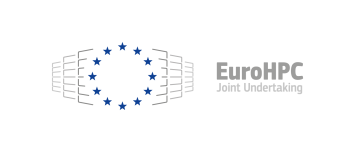-
About
- News | Events | Jobs
- Ecosystem
- Projects
- Funding
- Media
In a potential boost for quantum computing and communication, a European research collaboration including the Flagship's S2QUIP researchers reported a new method of controlling and manipulating single photons without generating heat. The solution makes it possible to integrate optical switches and single-photon detectors in a single chip.
Published today in Nature Communications, the team reported having developed an optical switch that is reconfigured with microscopic mechanical movement rather than heat, making the switch compatible with heat-sensitive single-photon detectors.
Optical switches in use today work by locally heating light guides inside a semiconductor chip. "This approach does not work for quantum optics," says co-author Samuel Gyger, a PhD student at KTH Royal Institute of Technology in Stockholm. "Because we want to detect every single photon, we use quantum detectors that work by measuring the heat a single photon generates when absorbed by a superconducting material," Gyger says. "If we use traditional switches, our detectors will be flooded by heat, and thus not work at all."

A controlled quantum circuit enabled by the reported heat-free switches.
The new method enables control of single photons without the disadvantage of heating up a semiconductor chip and thereby rendering single-photon detectors useless, says Carlos Errando Herranz, who conceived the research idea and led the work at KTH as part of the S2QUIP project in basic science. "Quantum technologies will enable secure message encryption and methods of computation that solve problems today's computers cannot," he says. "And they will provide simulation tools that enable us to understand the fundamental laws of nature, which can lead to new materials and medicines."
Using microelectromechanical (MEMS) actuation, the solution enables optical switching and photon detection on a single semiconductor chip while maintaining the cold temperatures required by single-photon detectors.
Our technology will help to connect all building blocks required for integrated optical circuits for quantum technologies
Carlos Errando Herranz / KTH former researcher, now in MIT
The group will further develop the technology to make it compatible with typical electronics, which will involve reducing the voltages used in the experimental setup.
Errando Herranz says that the group aims to integrate the fabrication process in semiconductor foundries that already fabricate on-chip optics - a necessary step in order to make quantum optic circuits large enough to fulfill some of the promises of quantum technologies.
Cited article
Gyger, S., Zichi, J., Schweickert, L. et al. Reconfigurable photonics with on-chip single-photon detectors. Nat Commun 12, 1408 (2021). https://doi.org/10.1038/s41467-021-21624-3.
This article was originally published in the KHT newsroom and edited for clarity.



